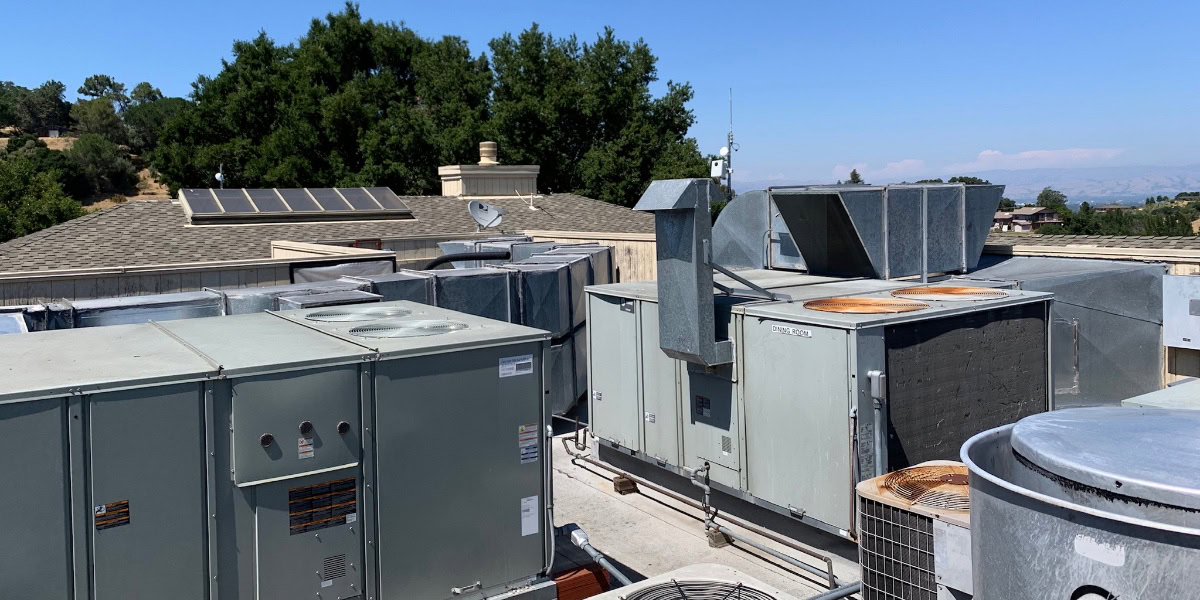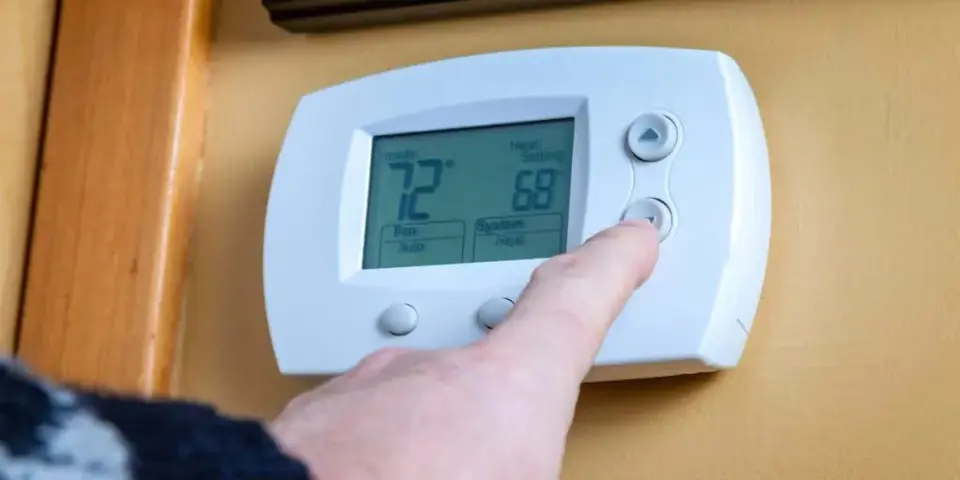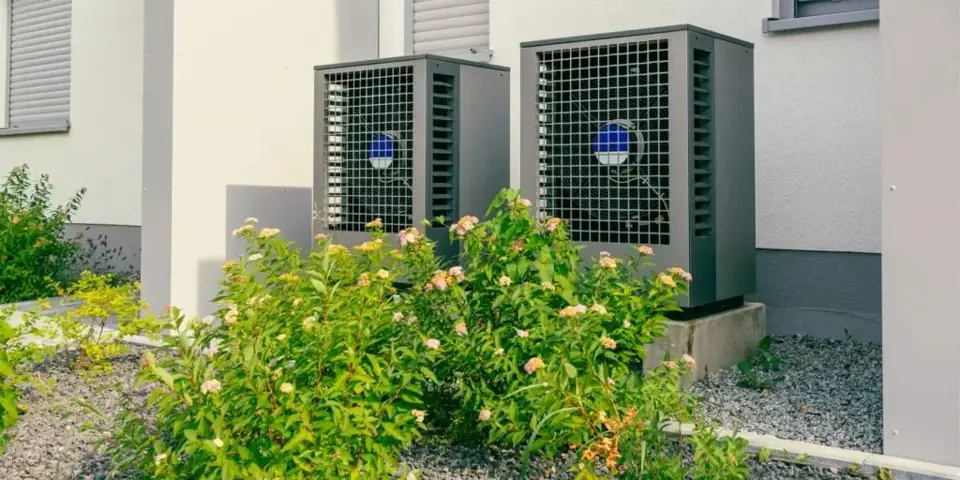Short cycling is one of the most damaging yet commonly overlooked problems in commercial HVAC systems. When your heating, ventilation, and air conditioning equipment repeatedly turns on and off in rapid succession—rather than running through complete, normal cycles—it’s not just an annoyance. It’s a serious issue that can dramatically reduce system efficiency, skyrocket energy costs, and significantly shorten the lifespan of expensive commercial equipment.
For business owners and facility managers in the San Francisco Bay Area, understanding short cycling is crucial for maintaining optimal indoor comfort while protecting your HVAC investment. This comprehensive guide will explore what short cycling is, why it happens, how to identify it, and most importantly, how to prevent it from wreaking havoc on your commercial HVAC system.
What Is Short Cycling in Commercial HVAC Systems?
Short cycling occurs when an HVAC system turns on, runs for a brief period (typically less than 10 minutes), shuts off, and then repeats this pattern continuously throughout the day. In a properly functioning system, heating and cooling equipment should run for longer periods—usually 15-20 minutes or more—to reach the desired temperature before cycling off for an extended period.
Think of it like a car that keeps starting and stopping in heavy traffic versus one cruising smoothly on the highway. The stop-and-go pattern is far more stressful on the engine, uses more fuel, and causes more wear and tear. The same principle applies to your commercial HVAC system.
Normal HVAC operation involves longer run cycles that allow the system to:
- Reach optimal operating efficiency
- Properly condition the air throughout the space
- Maintain consistent temperatures
- Operate within designed parameters
When short cycling occurs, none of these benefits are realized, leading to a cascade of problems that affect both performance and longevity.
The Hidden Costs of Short Cycling
Energy Efficiency Losses
Short cycling is an energy vampire that can increase your utility bills by 20-30% or more. During startup, HVAC equipment consumes significantly more energy than during steady-state operation. When a system short cycles, it’s constantly in this high-energy startup phase without ever reaching the efficient steady-state operation it was designed for.
Commercial HVAC systems are engineered to be most efficient during longer run cycles. The frequent starts associated with short cycling mean your system never reaches its optimal efficiency point, resulting in wasted energy and inflated utility costs.
Accelerated Equipment Wear
Every time an HVAC system starts up, it places stress on mechanical components. Motors, compressors, contactors, and other critical parts experience the most wear during startup and shutdown sequences. Short cycling multiplies these stress events exponentially.
Consider that a normally cycling system might start and stop 6-8 times per day, while a short cycling system could start and stop 30-50 times or more. This represents a 400-600% increase in wear-inducing events, dramatically shortening equipment lifespan and increasing the likelihood of premature failures.
Comfort and Indoor Air Quality Issues
Short cycling prevents HVAC systems from properly conditioning indoor air. The brief run times don’t allow for adequate air circulation, humidity control, or temperature stabilization. This results in:
- Hot and cold spots throughout the building
- Poor humidity control leading to comfort complaints
- Inadequate air filtration and ventilation
- Inconsistent temperatures that affect productivity and customer satisfaction
Increased Maintenance and Repair Costs
The accelerated wear caused by short cycling leads to more frequent breakdowns and the need for premature component replacements. What should be routine maintenance becomes emergency repairs, often at the worst possible times and at premium costs.
Common Causes of Short Cycling in Commercial HVAC
Understanding the root causes of short cycling is essential for effective prevention and resolution. Here are the most common culprits:
Oversized Equipment
One of the most frequent causes of short cycling is oversized HVAC equipment. When a system is too large for the space it serves, it quickly satisfies the thermostat’s call for heating or cooling, then shuts off before completing a proper cycle. This oversizing often occurs when:
- Equipment is selected based on peak load calculations without considering actual operating conditions
- Renovations reduce the conditioned space without downsizing the HVAC system
- Multiple systems serve overlapping zones
- Load calculations were performed incorrectly during initial installation
Thermostat Issues
Faulty or improperly located thermostats are another leading cause of short cycling. Problems include:
- Poor placement: Thermostats located near heat sources, in direct sunlight, or in areas with poor air circulation can give false readings
- Calibration issues: Inaccurate temperature sensing leads to premature cycling
- Differential settings: Thermostats with too narrow temperature differentials cause frequent cycling
- Electrical problems: Loose wiring or failing components can cause erratic operation
Airflow Restrictions
Restricted airflow forces HVAC systems to work harder and can trigger safety shutoffs that lead to short cycling. Common airflow issues include:
- Dirty air filters: Clogged filters restrict airflow and cause systems to overheat
- Blocked vents and registers: Furniture, equipment, or debris blocking air distribution
- Ductwork problems: Collapsed ducts, disconnected joints, or undersized ductwork
- Dirty coils: Evaporator and condenser coils clogged with dirt and debris
Refrigerant Issues
In cooling systems, refrigerant problems can cause short cycling through various mechanisms:
- Low refrigerant levels: Often due to leaks, causing the system to struggle to reach set temperatures
- Overcharged systems: Too much refrigerant can cause high pressures and safety shutoffs
- Refrigerant leaks: Even small leaks can gradually reduce system capacity and cause cycling issues
Electrical Problems
Electrical issues can cause intermittent operation that mimics or causes short cycling:
- Loose connections: Can cause intermittent power loss
- Failing contactors: May not maintain proper electrical connections
- Capacitor problems: Weak or failing capacitors affect motor operation
- Control board issues: Faulty control boards can send erratic signals
Heat Exchanger and Safety Issues
In heating systems, heat exchanger problems or safety device malfunctions can cause short cycling:
- Overheating: Dirty heat exchangers or restricted airflow can cause overheating shutdowns
- Flame sensor issues: Dirty or failing flame sensors can cause gas systems to cycle on and off
- Pressure switch problems: Faulty pressure switches may not allow proper operation
How to Identify Short Cycling
Recognizing short cycling early is crucial for preventing extensive damage. Here are key indicators to watch for:
Obvious Signs
- Frequent on/off cycling: The most obvious sign is hearing your HVAC system start and stop repeatedly throughout the day
- Short run times: If your system runs for less than 10 minutes before shutting off, it’s likely short cycling
- Temperature fluctuations: Noticeable temperature swings throughout your facility
- High energy bills: Unexplained increases in utility costs despite similar usage patterns
Monitoring and Documentation
To properly diagnose short cycling, consider implementing these monitoring strategies:
- Run time logging: Track how long your system runs during each cycle
- Temperature monitoring: Use data loggers to track temperature variations
- Energy monitoring: Monitor power consumption patterns to identify inefficient operation
- Professional assessment: Have qualified technicians perform detailed system analysis
Prevention Strategies for Commercial HVAC Short Cycling
Preventing short cycling requires a comprehensive approach that addresses potential causes before they become problems.
Proper System Sizing
Ensuring your HVAC system is properly sized for your facility is fundamental to preventing short cycling:
- Accurate load calculations: Work with qualified professionals to perform detailed heating and cooling load calculations
- Consider all factors: Account for building orientation, insulation, occupancy patterns, and equipment loads
- Plan for efficiency: Size equipment for optimal efficiency rather than just peak capacity
- Regular reassessment: Reevaluate system sizing when making building modifications
Thermostat Optimization
Proper thermostat selection, placement, and programming can eliminate many short cycling issues:
- Strategic placement: Install thermostats away from heat sources, direct sunlight, and areas with poor air circulation
- Appropriate differentials: Set temperature differentials wide enough to allow proper cycling (typically 2-4°F)
- Regular calibration: Ensure thermostats are accurately reading and controlling temperatures
- Upgrade considerations: Consider programmable or smart thermostats with advanced cycling controls
Airflow Management
Maintaining proper airflow is critical for preventing short cycling:
- Regular filter changes: Establish and maintain a consistent filter replacement schedule
- Ductwork inspection: Regularly inspect and maintain ductwork for leaks, blockages, and proper sizing
- Coil maintenance: Keep evaporator and condenser coils clean and free of debris
- Ventilation balance: Ensure proper air distribution throughout the facility
Preventive Maintenance Programs
A comprehensive preventive maintenance program is your best defense against short cycling:
- Regular inspections: Schedule quarterly or bi-annual professional inspections
- Component testing: Regularly test electrical components, safety devices, and controls
- Refrigerant monitoring: Check refrigerant levels and system pressures regularly
- Documentation: Maintain detailed records of all maintenance activities and system performance
Professional System Analysis
Regular professional analysis can identify potential short cycling issues before they become problems:
- Performance testing: Comprehensive testing of system capacity and efficiency
- Control system evaluation: Analysis of control sequences and safety devices
- Airflow measurement: Professional airflow testing and balancing
- Energy audits: Detailed analysis of energy consumption patterns
Advanced Solutions for Persistent Short Cycling
When basic prevention strategies aren’t sufficient, more advanced solutions may be necessary:
Variable Speed Technology
Modern variable speed HVAC equipment can help eliminate short cycling by:
- Modulating capacity: Adjusting output to match actual load requirements
- Longer run times: Operating at lower speeds for extended periods
- Improved efficiency: Maintaining optimal efficiency across a wider range of conditions
Zoning Systems
Properly designed zoning systems can prevent short cycling by:
- Load matching: Allowing different areas to be conditioned independently
- Reduced oversizing: Eliminating the need for oversized central systems
- Improved control: Providing more precise temperature control throughout the facility
Advanced Controls
Sophisticated control systems can prevent short cycling through:
- Intelligent cycling: Advanced algorithms that optimize run times
- Predictive operation: Controls that anticipate load changes
- Integration capabilities: Coordination with other building systems for optimal operation
The Role of Professional HVAC Service
While some aspects of short cycling prevention can be handled in-house, professional HVAC service is essential for:
Comprehensive System Analysis
Professional technicians have the tools and expertise to:
- Perform detailed system diagnostics
- Identify root causes of cycling issues
- Recommend appropriate solutions
- Implement complex repairs and modifications
Specialized Equipment and Tools
Professional service providers have access to:
- Advanced diagnostic equipment
- Specialized testing tools
- Professional-grade replacement parts
- Industry-specific knowledge and training
Ongoing Support and Maintenance
Establishing a relationship with a qualified HVAC service provider ensures:
- Regular preventive maintenance
- Priority service for emergency repairs
- Access to the latest technology and techniques
- Long-term system optimization
Industry Best Practices for Commercial HVAC
Following industry best practices can significantly reduce the likelihood of short cycling:
Design Standards
- Follow ASHRAE guidelines for system design and installation
- Use proper load calculation methodologies
- Consider future expansion and modification needs
- Implement appropriate safety factors without oversizing
Installation Quality
- Ensure proper installation by qualified technicians
- Follow manufacturer specifications and guidelines
- Implement proper commissioning procedures
- Document all installation details and settings
Operational Procedures
- Establish clear operating procedures for facility staff
- Provide training on proper system operation
- Implement monitoring and reporting protocols
- Maintain detailed operational records
Conclusion
Short cycling in commercial HVAC systems is a serious issue that can dramatically impact energy efficiency, equipment lifespan, and indoor comfort. By understanding the causes, implementing proper prevention strategies, and maintaining regular professional service, facility managers can protect their HVAC investments while ensuring optimal performance.
The key to preventing short cycling lies in a proactive approach that combines proper system design, regular maintenance, and professional expertise. Don’t wait for short cycling to damage your equipment and inflate your energy costs—take action now to protect your commercial HVAC system.
Ready to eliminate short cycling in your commercial HVAC system? If you’re located in the San Francisco Bay Area, including San Francisco, Santa Clara County, San Mateo County, or Alameda County, R&R Refrigeration and Air Conditioning is here to help. With over 65 years of experience since 1958, our expert technicians specialize in commercial HVAC and refrigeration systems, including walk-in cooler construction and comprehensive HVAC solutions.
Contact R&R Refrigeration and Air Conditioning today for a comprehensive system analysis and customized solutions to prevent short cycling and optimize your commercial HVAC performance. Don’t let short cycling continue to waste energy and damage your equipment—call the Bay Area’s trusted commercial HVAC experts now.
Frequently Asked Questions about Short Cycling in Commercial HVAC
The most obvious sign of short cycling is when your HVAC system turns on and off repeatedly throughout the day, with run times of less than 10 minutes. You may also notice temperature fluctuations in your building, higher than normal energy bills, and frequent comfort complaints from occupants. If you hear your system starting and stopping more than 6-8 times per hour, it’s likely short cycling and needs professional attention.
Normal HVAC operation involves longer run cycles of 15-20 minutes or more, followed by extended off periods. The system reaches its set temperature, maintains it efficiently, and cycles off until the temperature drifts enough to require conditioning again. Short cycling involves rapid on/off cycles of less than 10 minutes, preventing the system from reaching optimal efficiency and properly conditioning the space.
Yes, short cycling can cause significant and permanent damage to HVAC equipment. The frequent starts and stops place excessive stress on motors, compressors, contactors, and other mechanical components. This can lead to premature failure of expensive parts, reduced equipment lifespan (sometimes by 50% or more), and the need for costly emergency repairs or complete system replacement.
Short cycling can increase energy costs by 20-30% or more. During startup, HVAC equipment consumes significantly more energy than during steady-state operation. When a system short cycles, it’s constantly in this high-energy startup phase without ever reaching efficient operation. The exact increase depends on the severity of the short cycling and the type of equipment involved.
While some simple causes like dirty air filters can be addressed in-house, most short cycling issues require professional diagnosis and repair. Problems like oversized equipment, refrigerant issues, electrical problems, and control system malfunctions need specialized tools, knowledge, and experience to resolve safely and effectively. Attempting DIY repairs on commercial HVAC systems can be dangerous and may void equipment warranties.






